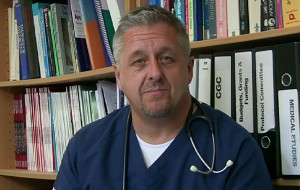Transfer Patients Before Things Worsen
FOLLOWING the story Chopper Arrives for Child, published on Monday, there were community questions relating to why a child with asthma may need to be transferred out of the local hospital, so we asked an expert: Dr Paul Middleton the Professor of emergency medicine at the University of Sydney, Chair of the Australian Resuscitation Council, a practicing emergency medicine specialist at the Liverpool Hospital and who spent eight years in medical retrieval including time as a retrieval coordinator; he explained the following:
The Decision to Transfer:
The care for potentially or acutely or critically ill children and adults is a specialised field and although there are many hospital emergency departments the actual capacity and skills of the doctors and nurses within the hospital does vary.
You might have an emergency department at Scone that does have people who are competent to assess children when they initially present; one of the most important skills that you teach doctors in emergency departments is when to recognise when they can’t cope with any more potentially serious problems and to recognise there is at least the potential for things to get worse and be outside their ability to manage them.
What we are talking about is appropriate recognition that although the child may not be that ill right now they have the potential to be and they recognise that it is outside of the capability of the hospital and the staff that are there, so it is an appropriate decision to make and it’s a safe way to manage things because it means patients are not allowed to deteriorate and get really bad in a situation where there is not the expertise to deal with them.
There is a difference between recognition of a level of illness and being able to manage the complications of the consequences of those levels of illness.
One of the other principles about that sort of medicine is actually doing it as early as possible so that you run as little risk in the transfer, rather than wait until they are really sick when there is a risk of adverse events during transport you do it when you know that they may potentially need it, that they may get worse but if you do it now, that’s the right time.
The Benefits of a Larger Hospital:
First of all there are emergency physicians, that means there are people who are specialists in the area of emergency medicine including paediatric emergency medicine.
There will be GP VMO’s (general practitioner visiting medical officers) or CMO’s (career medical officers) at Scone there but there won’t be specialists in emergency medicine there, so that is the first level.
Secondly there will be paediatricians and thirdly paediatric intensive care people at John hunter, which is the pointy end of the whole thing and a very deep understanding of skill.
So all three of those things have the top of the tree people there and practically speaking they have the facilities to manage whatever my happen including intensive care units and sophisticated emergency departments.
Asthma:
A simple asthma attack will respond to the bronchodilator, such as the puffer, plus or minus some steroids.
The problem is that all asthma is not the same, sometimes you get people who have a much more severe response and it means the constriction of the airways and the secretion of stuff into the airways can be a little bit or it can be profound to the point where people just can’t breathe and there is a whole spectrum between those two ends.
One of the big things you do is firstly clinically assess a child to see how much work they are having to do to breathe and that in itself is complex because you are not only looking at a continuum where if they are breathing at the normal rate they are ok and if they are breathing faster unwell, but also kids that go over the other side of that hump and start to breathe more slowly because they are exhausted and that is when disaster is about to strike.
The two things that kill children, that cause cardiac arrest in children most commonly are hypovolemia, which is lack of fluids and hypoxia which is a lack of oxygen and a severe or critical asthma attack is one of the main causes of a lack of oxygen.
So the principle once again is to recognise when they are not responding to the normal treatment and if they are not responding to the normal stuff then that really is a decision point that says they really need to go somewhere with a higher level of care in case they continue to get worse.
More Advice on Child Illness from Professor Middleton:
To help parents recognise what level of health care to seek for their children when they are sick and how to recognise danger signs in children he was a co-author of the book What To Do When Your Child Gets Sick, which is available to purchase online through Allen and Unwin: Link to the book.
Take Heart Australia:
Professor Middleton also established the charity Take Heart Australia to decrease the amount of people dying of cardiac arrest in Australia.
There is currently on a 10% survival rate in Australia, with four people dying every week from sudden cardiac arrest, but in places like Seattle the survival rates are now 64%.
On October 31 they will hold CPR training for 20,000 people, mostly children at Alliance Stadium.
Visit their website: www.takeheartaustralia.com.au
Like their Facebook page: www.facebook.com/takeheartaustralia
 scone.com.au
scone.com.au